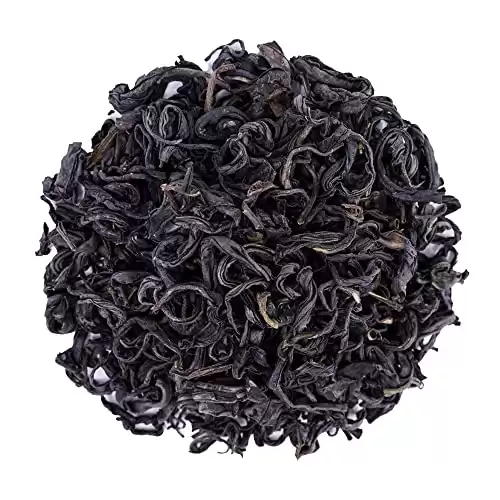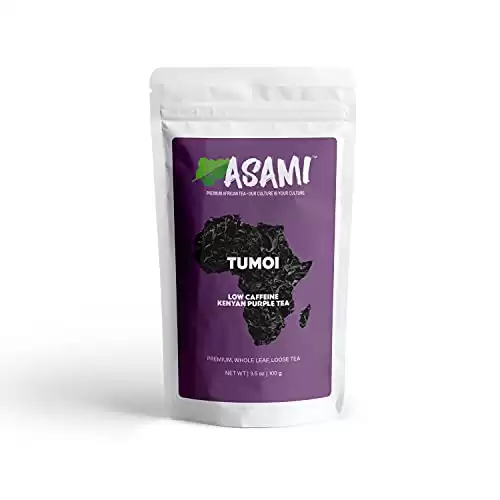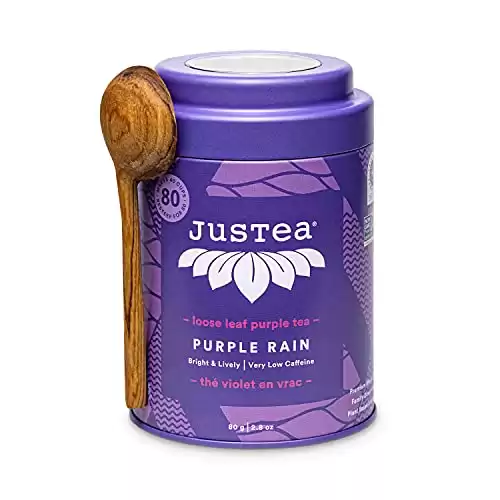Is Purple Tea considered tea? Yes. Purple tea was first introduced to Kenya by India. Purple tea was crossbred with our familiar Camellia Sinensis. The beautiful purple leaves are plucked and processed and a cup of purple tea was created.
Purple tea may seem like a new product., it’s not. Introduced to Kenya in 2009. Purchased by the Tea Research Institute in Kenya the 20,000 bushes of purple tea began to grow. The health benefits of purple tea include a higher level of anthocyanin than other teas. There are many health benefits to purple tea and much to learn. 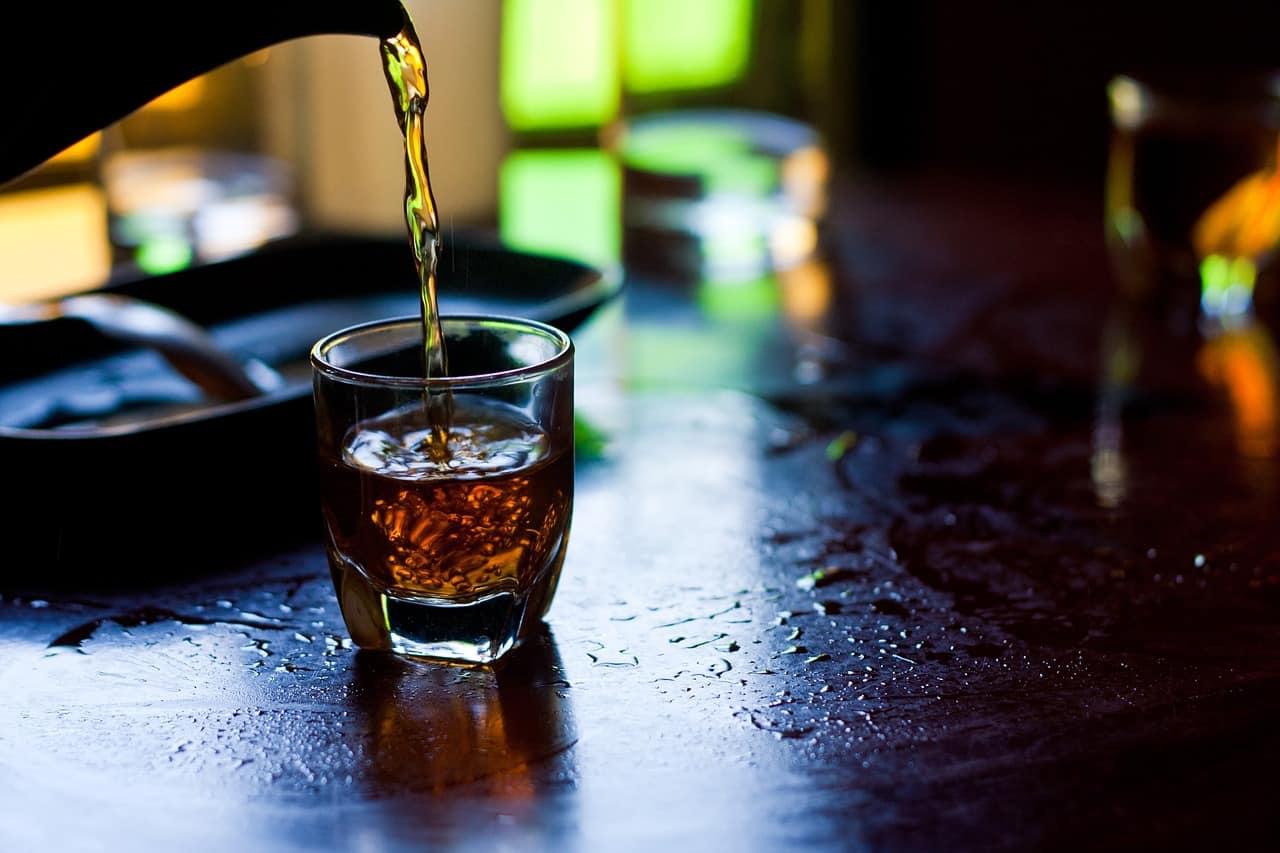
The History of Purple Tea
Purple tea was first discovered in India and still has ties to China.
Purple tea was given to Kenya and The Tea Research Foundation of Kenya. The foundation was able to crossbreed the tea with Camellia Irrawadensis. In 2011 Kenyan Farmers were asked to commit to five years of growing the purple tea to maturity. There are only a few hundred tea farms growing purple tea. Purple tea is grown from a cutting and not a seed.
Purple tea is a rare
In China, most purple leaves of any origin are still used to make sheng puer tea cakes as per tradition. As puerh ripening techniques improve producers are starting to make shu Puerh with them. In Kenya, much of the purple leaf crops that are grown there are made into
The development of intense purple cultivars began in 1985. In 1985 researchers took cuttings from these Zi Juan Camellia sinensis var. assamica trees in the forest and began growing them at the Yunnan Academy of Agricultural Sciences Tea Institute. The cuttings are put through a process of propagating and backcrossing. They are then able to selectively breed tea plants. Tea plants with a much more concentrated dark purple color.
This new second-generation cultivar was also named Zi Juan after the original trees.
People have made tea using purple plants for thousands of years. Intense purple cultivars like Zi Juan have only arisen in the past thirty years. It’s yet to be seen, whether they will become more widely recognized and available.
Explore the world of loose tea! Here you will find a variety of our delicious loose-leaf teas.
What Is Purple Tea?
The reason why we call it purple tea? The bush itself shows a purple color. The leaf itself is purple when not oxidized and is processed much like green tea. If allowed to grow to maturity, the purple leaves will fade to green again.
Purple was called Zi Ya, which means “purple buds” by the locals.
Grown in a cooler environment the mountains of Kenya were perfect. The mountains range in elevation from 4500 to 7500 feet. The mountain’s altitude, along with the brightness of the sun, causes purple tea to have a higher level of anthocyanins and polyphenols. Purple tea may also be drought and frost-resistant.
People thought that the production of purple leaves was dependent on soil conditions. But, scientists have since discovered that this trait has a heritable genetic basis. This genetic basis is also affected by environmental conditions. In the Zi Juan cultivar, the purple coloration is produced by the up-regulation of a transcription factor. This factor helps control the levels of anthocyanins present.
By exposing the plant to cooler temperatures and longer periods of light the exposure seems to encourage the up-regulation. This leads to a greater accumulation of anthocyanins in the leaves. Turning them darker purple. These findings corroborate the traditional knowledge that purple plants are found at higher elevations. Possibly because of the colder temperatures.
Many of these cultivars develop not only for color but for resistance to agricultural stresses. Stresses like drought, pests, and temperature extremes. The production of extra anthocyanin appears to be one of the plant’s responses to such conditions. This helps them survive such environmental challenges. The high levels of anthocyanins make the plants better adapted to survive in our ever more unpredictable climate.
It is possible that purple cultivars will become quite valuable. More valuable to tea farmers for more reasons. Reasons more than their aesthetic, nutritional, and gastronomic qualities.
In the end, purple-leaf tea is another one of those many cases where a natural variation is cultivated by humans and taken to an extreme.
Premium Purple African tea is refreshing, delightful, light body like green tea, without the grassy flavor.
Varieties Of Purple Tea
Gu Zhu Zi Sun (purple bamboo shoot) – A faint purple blush of the earliest leaves. This tea dates back to the Tang Dynasty.
Zi Juan Variety – The darkest of the tea variety. The leaves are reddish-purple in color on the 4-5 leaves and the stem of any new growth. Named after a Chinese classic Dream of the Red Chamber.
Zi Juan Gong Ting (purple leaf palace puer) – Gong Ting or “Palace Pu Erh” is a shou puerh of the highest quality, young leaf.
Zi Ye Shu (purple leaf shu puer) – A puer tea made from the young leaves of old tea trees when it first flushes in the spring
Hei Tiao Zi (black stripe) – Show purple on the youngest 2 or 3 leaves with regular green stems.
Purple tea leaves made into Puer cakes are relatively new. They are made from the Zi Juan Variety. First shared with the tea world in 2006 and the interest continues to grow in them. There are two varieties listed below:
- Jing Mai eng La Zi Juan (purple tea buds)
- Zi Juan (purple tea leaves)
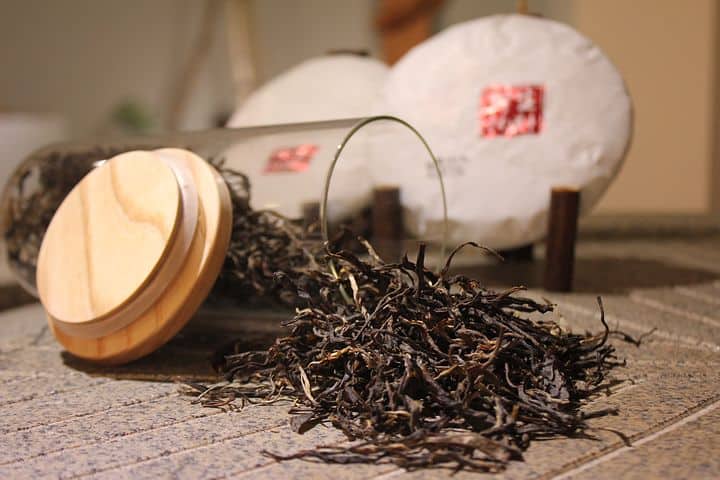
What Is Purple Tea Good For?
Purple tea is a powerhouse of catechins and EPCG. We all know the health benefits of black and green teas but purple tea knocks it out of the ballpark. They fight against cancer, heart disease, inflammation, and diabetes.
Anthocyanins – Anthocyanins are antioxidants. These antioxidants are what cause the purplish reddish color of the leaves. Like the coloring in blueberries, raspberries, and other foods with the same characteristics. Purple tea has a much higher content of blueberries about 15% to 0.1%. These “purple” antioxidants are credited for helping the body fight against free radicals. Free radicals harm the cells within our bodies.
Antioxidants – Purple tea excels with antioxidants at a rate of 51% compared to 34.3% of green tea.
Low in caffeine – If you’d like to limit your caffeine intake and still get the benefits of tea, purple tea is the choice you should make. Because purple tea contains l-theanine it helps to reduce anxiety and promotes relaxation.
Polyphenol – Polyphenols are chemicals that are found in food to help fight free radicals inside the body. Free radicals are unstable molecules that cause damage to the cells and arteries. They can cause other damage to the body as well. The polyphenol in purple tea is more powerful than those in black or green tea.
GHG – Purple tea also has a unique polyphenol called GHG. GHG is not found in the other varieties of tea. Purple tea is boosted for helping drinkers lose weight and GHG may be the reason why. Scientific research tells us that purple tea helps with weight loss and brain health. GHG from purple tea has been shown in studies to decrease body mass.
A cup of Purple Rain is a bright tropical infusion of juicy passion fruit, sweet lemongrass, crisp apple, and a hint of hibiscus.
What Does Purple Tea Taste Like?
Purple tea tastes and smells similar to white tea. There is a hint of fruit, mellow, and a very mild flavor. I feel there is a bit of woody or earthy flavor as well. There is no bitterness or tartness. It also lacks the vegetal flavor found in some green teas.
The Japanese and Chinese varieties are more bitter. This seems to cause side effects in people that are more sensitive to tannins.
How To Brew Purple Tea
Purple tea is generally drunk without sweeteners, honey, or milk.
- Boil your water
- Add 2 teaspoons of purple tea
- Let it sit for three or four minutes (you can brew longer for stronger tea)
- You can also continue to boil it as it won’t affect the tea
- Enjoy hot or cold
- You can also add other herbs and spices to your purple tea or enjoy it alone
Side Effect of Purple Tea
Purple tea can cause stomach upset or diarrhea if drunk in large amounts.
Pregnant or nursing mothers should use it with caution or avoid it during these times.
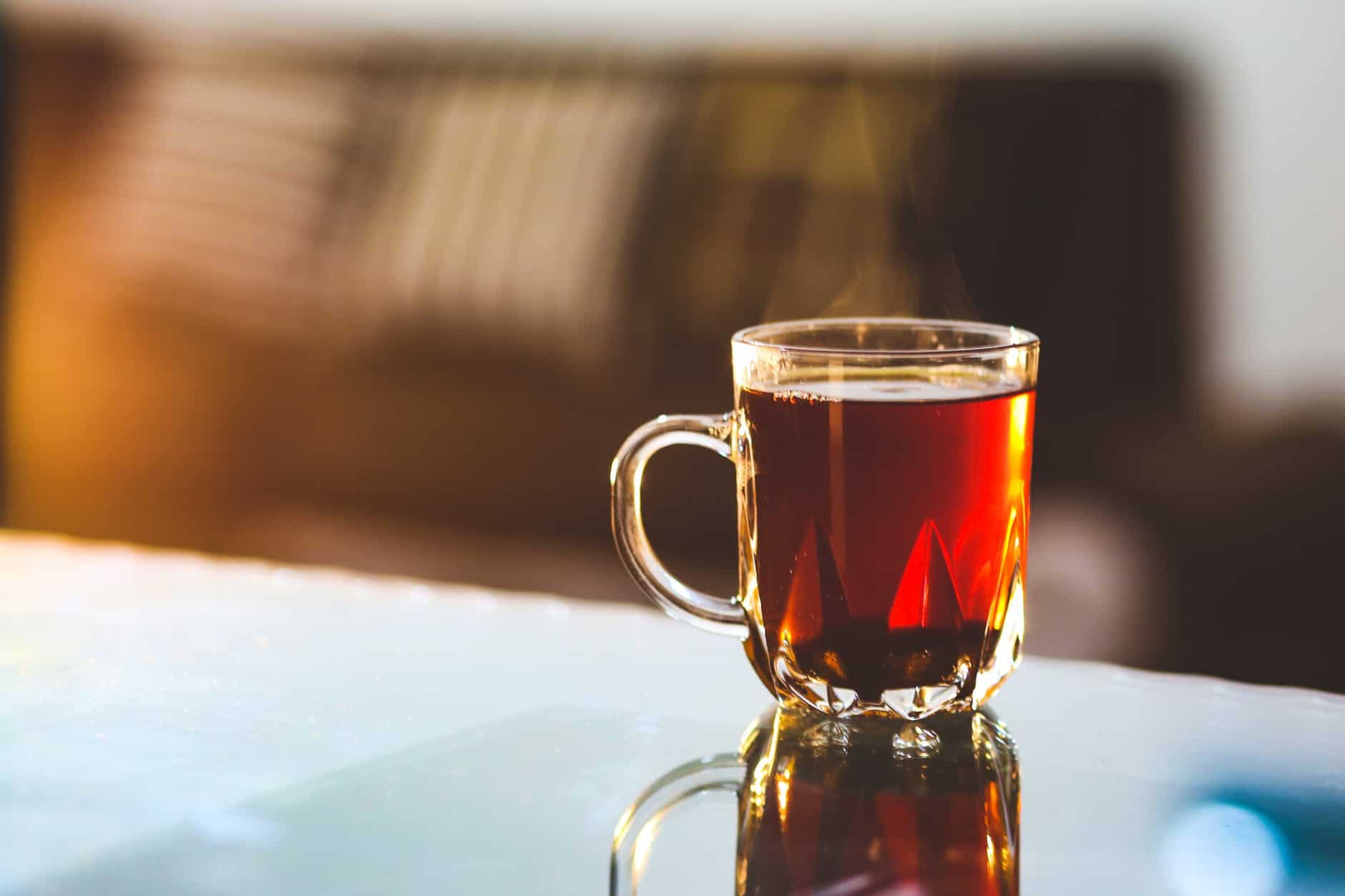
Summary
The fairy tale of teas. Here comes the purple tea. A beneficial, healthy, unique, and great-tasting beverage. Drink it alone or infuse it. But drinking it is a must. There is a slight caution in whom you buy from and as long as it’s someone you know and trust you are set.
The benefits of purple tea are incredible. Greater than our more commonly known black and green teas. The special polyphenol GHG in purple tea can help decrease body mass. According to some initial research, GHG is not found in any other tea or ingredient.
It’s a great addition to the tea collection. If you get an opportunity to try purple tea, do it! It’s a rare and treasured gem.

